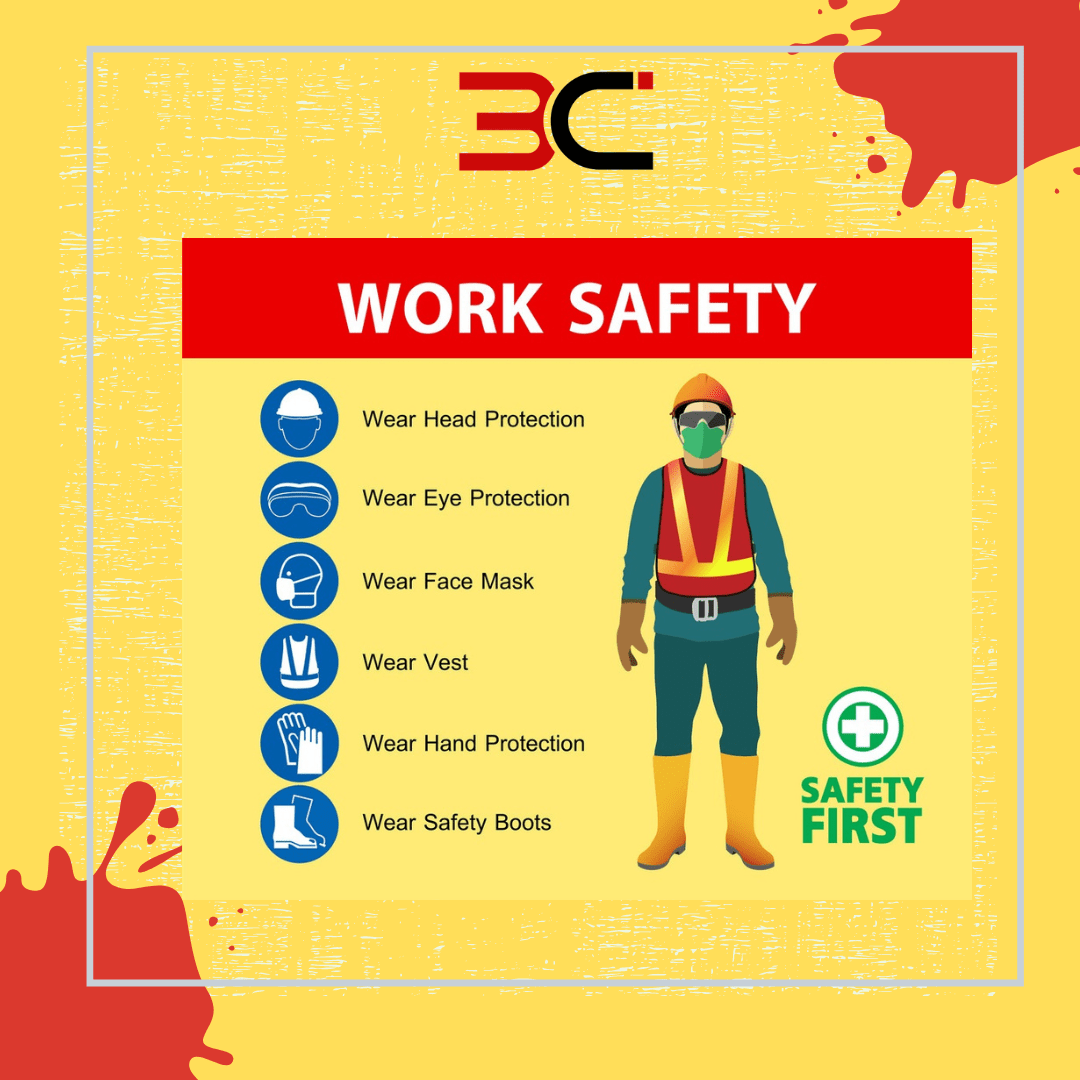Construction safety management is a crucial element of any construction project. It involves comprehensive planning, monitoring, and control of health and safety responsibilities to ensure the success of the project and the safety of all involved.
By implementing a safety management system, construction projects can reduce the risk of accidents and ensure a safe and productive work environment for all employees.
This blog post will explore the importance of construction safety management, and how it can help ensure the success of your project.
Construction Safety Management: What Is It?
A Safety Management System (SMS) is a comprehensive and structured approach to preventing injuries, accidents, and health hazards at a construction work site. It involves all the safety-related activities on the work site. It focuses on hazard identification, risk management, safety policies, safety plans, objective setting, safety training schedules, and reporting procedures.
To make sure that safety is not compromised, every safety management system must have a management structure that maps out each of these components. The system must also include a comprehensive plan of action in case an accident or injury occurs. Finally, a set of processes for assessing potential risks should be included to implement necessary preventive measures.
The success of a safety management system depends on the commitment of all employees to follow the regulations and report any potential hazards. It is essential that everyone understands the importance of taking safety seriously. They should be willing to take responsibility for their safety as well as the safety of their colleagues.
How Does the Safety Management Process Work for a Construction Project?
The goal of the safety management process is to reduce the risk of accidents and injuries on the job site. The process should begin before any work is done, with a careful assessment of the potential hazards and risks associated with the project.
Here is how the process works –
- The first step in the safety management process is identifying all potential risks associated with the job site. This includes identifying anything from hazardous materials to hazardous locations. Moreover, it should point out other potential risks that may cause injury or death.
- The next step is to pre-decide on suitable controls and steps that can be taken to avoid accidents once these risks have been identified.
- Then, the system should monitor the work being done at the job site. This includes ensuring safe practices are being followed, and safe conditions are being maintained. In addition, regular safety education and training should be provided to all employees.
- Once the work has begun, it is important to enforce effective communication across all levels of the organization. This means everyone involved in the project knows what is expected of them and how to respond in case of an emergency.
- Finally, everyone should abide by the standard occupational health and safety regulations. Before that, all necessary documents, such as health and safety plans, hazard assessments, and job safety analyses should be completed. This will confirm your project complies with local, state, and federal laws regarding safety.
Construction Safety Management: Its Importance
Construction safety management systems are important for public protection. It is also needed to save both time and money. Aside from that, the following are some mentionable facts –
- Public Protection: A safety management system can protect the public from any potential risk that may occur in a construction project.
- Time and Money Savings: Construction safety management can reduce the chances of delays due to injury or illness and the costs associated with workplace insurance claims.
- Regulatory Compliance: Companies must adhere to safety regulations to protect their employees. A safety manager must ensure that the company adheres to the applicable laws and regulations to protect the company from risk.
- Promotion of Safety Cultures: A safety manager must create a culture of safety within the organization. This includes educating employees on the importance of following safety protocols and rules. Additionally, they can have clear communication channels with all members of the team.
- Strong Relationships: The safety manager must also build strong relationships with the team. This will ensure that everyone on the site follows safety regulations so that any potential hazards are reported quickly.
Construction Safety Management’s Range Of Application
The goal of construction safety management is to create an environment where everyone works safely, cooperatively, and efficiently. By taking the time to develop a comprehensive plan for construction safety management, you can ensure that your worksite remains safe and efficient.
As a result, you must know the range of applications of construction safety management, which includes:
- Identifying workplace risks when planning work and implementing appropriate controls to avoid personal injury and property damage.
- Monitoring work to provide early detection and correction of unsafe practices and conditions.
- Implementing effective communication across all levels of the organization.
- Protecting adjacent public and private properties.
- Providing safety education and incentive programs.
- Complying with occupational, health, and safety rules and requirements.
Accidents in Construction: Types
Construction is a dangerous profession, with various potential causes of accidents. Some of the most common types of construction accidents include:
- Fall from height: This is the most common type of construction accident. Usually, it happens when workers are working at heights. Falls from ladders, scaffolding, roofs and other elevated locations are all too common in the industry.
- Crane or hoist accidents: crane or hoist accidents can involve objects falling or workers being injured while using a crane or hoist.
- Slips and falls: Slips and falls are another common cause of construction accidents, particularly in wet and slippery conditions.
- Being struck by falling objects: Workers can be injured by being struck by falling objects, such as tools, beams, and other materials.
- Getting caught in or between objects: Workers can be injured if they get caught in or between moving or stationary objects.
- Fires and explosions: Fires and explosions can be caused by combustible materials, gas leaks, welding accidents, and other factors.
- Gas leaks: Natural gas leaks can cause serious injury and even death to construction workers.
- Forklift accidents: Forklifts can be dangerous machines if not operated properly. Accidents involving forklifts can lead to serious injuries and even death.
- Electrocutions: Construction workers can be electrocuted if they come into contact with electrical wires or other sources of electricity.
- Chemical spills: Chemical spills on construction sites can be hazardous to workers if not properly contained.
- Trench collapses: Trench collapses can occur if the soil supporting the trench is improper.
- Defective tools and machinery: Faulty tools and machinery can cause serious injury to workers if not checked regularly.
- Defective safety equipment: Workers may be put at risk by faulty safety gear, such as helmets, goggles, gloves, and earmuffs.
- Machinery accidents: These are a common type of construction accident. This can involve heavy machinery like cranes, bulldozers, forklifts, etc.
Process For Assessing Safety Risks
Risk management for safety in construction is a method rather than a product. Risk management procedures for occupational site health and safety can be roughly categorized into four steps, which are –
- Plan – This step involves creating safety policies and procedures based on a risk assessment report. The risk assessment should include –
- The identification of hazards in the workplace
- The evaluation of the risk associated with these hazards
- The determination of control measures to reduce the risk to an acceptable level
- The assignment of safety responsibilities
- Do – This step involves enforcing the policies and procedures. This includes training workers on safety protocols, providing appropriate Personal Protective Equipment (PPE), conducting regular safety inspections, and enforcing penalties for unsafe behavior.
- Check – This entails assessing safety performance to ensure its applicability, efficacy, and efficiency. Regular audits should be conducted to assess whether the implemented safety protocols are working or not. In addition, data should be collected from different sources.
- Act – This step entails taking corrective action to avoid safety and health problems. Remedial measures may involve putting new safety protocols into place or changing current ones. All stakeholders should be informed clearly of any changes. Additionally, feedback should be requested to guarantee that everyone is aware of the new protocols.
Some Tips On Maintaining Safety In Construction Projects
Maintaining safety in construction projects is essential to ensuring the safety of workers, visitors, and the public. Here are some tips to help maintain a safe construction environment –
- All workers should wear the correct PPE at all times when working on a construction project. This includes helmets, gloves, goggles, safety boots, and other items depending on the type of work they are doing.
- Provide induction to all new employees before they begin work. This will give them important information about the rules and regulations surrounding safety onsite.
- Keep the worksite as clean and tidy as possible to reduce the risk of slips, trips, and falls. Ensure that tools and materials are stored securely, walkways are clear, and hazardous waste is disposed of correctly.
- By educating employees about safety, you can build a strong safety culture. This must be based on using the right safety equipment and working safely. Ensure everyone knows the safety precautions and what to do in an emergency.
- Put up posters around the site illustrating safety rules and procedures. This can serve as a reminder to everyone that safety is important.
- Workers should be able to report any unsafe workspaces or faulty equipment easily. In fact, they should be encouraged so that issues can be addressed quickly and efficiently.
Bottom Line
Negligence, poor safety procedures, and unsafe working conditions are often to blame for accidents and catastrophes. As a result, safety in the construction business is crucial. Since the project management process includes a safety management system, suitable provisions must be created for this process to support and record the safety practices implemented on site.


I am interest